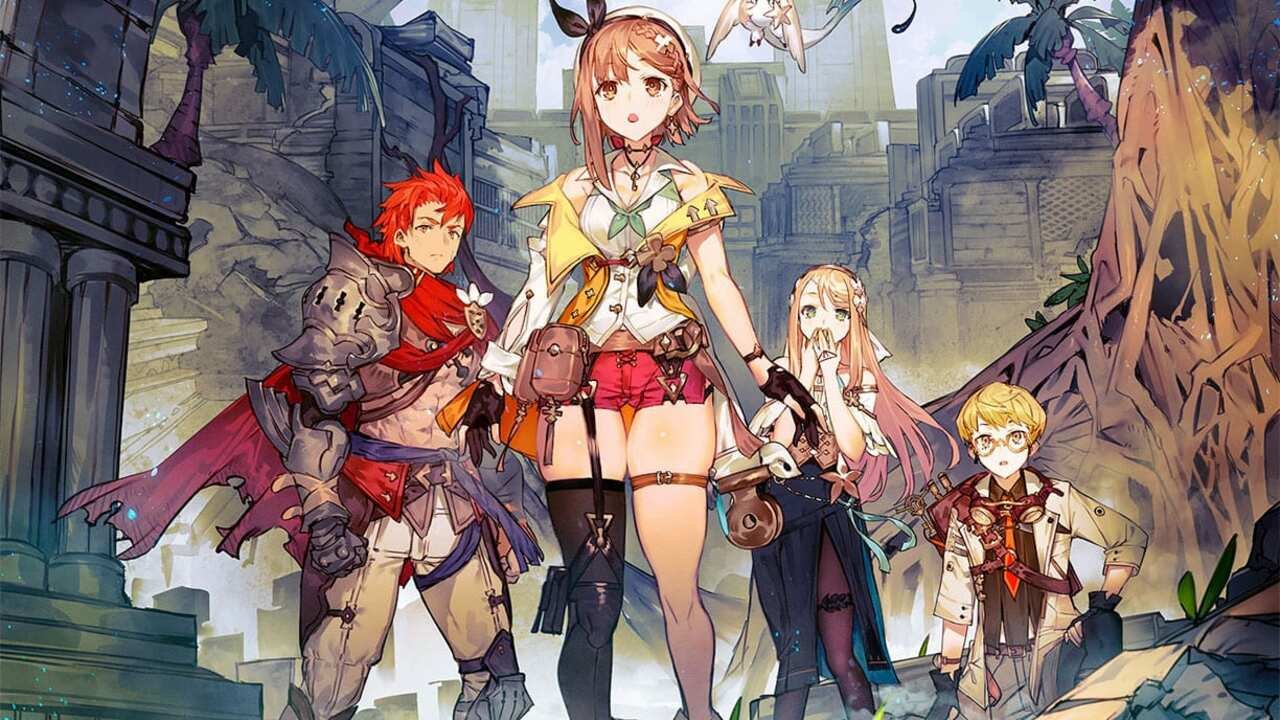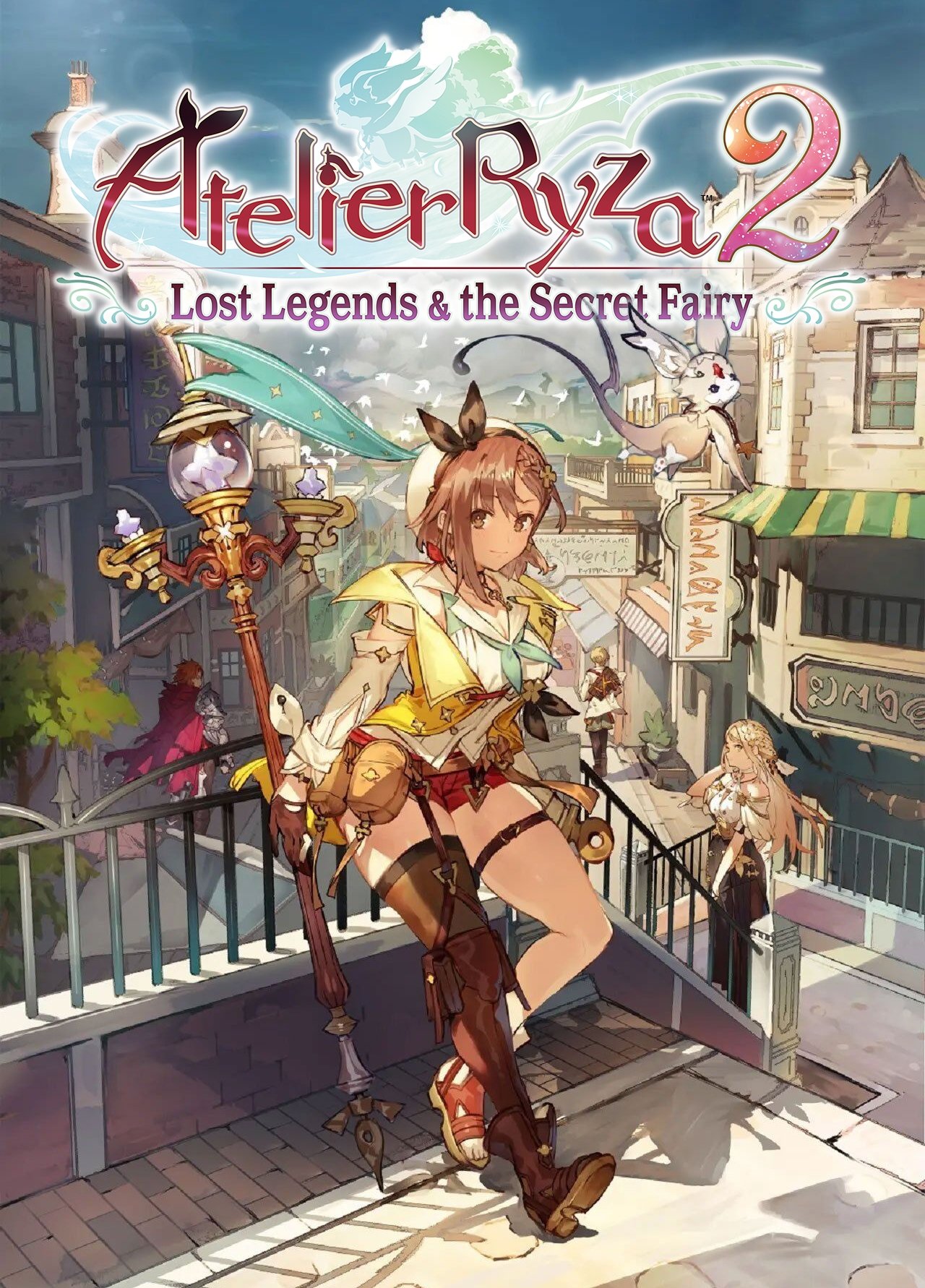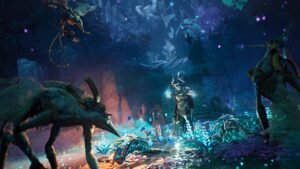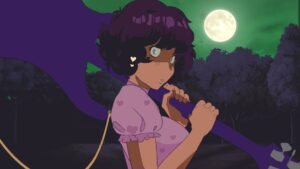As a newcomer to the Atelier franchise, I wasn’t sure what to expect from Atelier Ryza 2 aside from the advertised elements of alchemy and exploration. The series has been around since 1997 in Japan, or 2004 for English audiences, but this was my first experience dipping a toe into its waters. What I found was a charming and chill JRPG, though nothing earth-shattering.
Players take on the role of Riesalin “Ryza” Stout, an alchemist from a small island who is called to the capital city of Ashram-am Baird. Three years prior, in the original game, she had a grand adventure with her friends back home on Kurken Island (as the game will repeatedly remind you), and now she’s seeking new knowledge in the big city and catching up with those old companions.
I was struck early on by the light and breezy feel of the game. With Ryza visiting a new city and reuniting with old friends, exploring new environments and honing her skills, it felt somewhat like a summer vacation in the first few hours. This is enhanced by bright, idyllic environments and a surprisingly vibrant score. The battle music, in particular, was invigorating. The Switch version isn’t as bright and shiny as the PlayStation 4 or PC ports, but I think this aesthetic serves the atmosphere better than ultra-polished 4K HD.
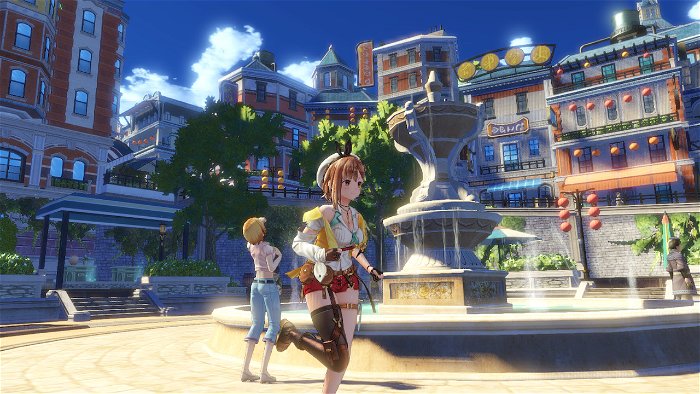
At its simplest level, the game typically has you exploring the wilderness and battling monsters for crafting components, then returning to Ryza’s atelier to craft new or enhanced items. These improvements will allow you to reach new areas, harvest new sources, fight tougher enemies, and earn better components for better crafting, thus enabling you to move on with the main narrative. Story objectives and random quests keep things interesting, as well as field actions like diving. Exploration is aided by a relatively simple fast-travel method, mitigating more tedious fetch-quest elements.
The real standout feature is the ruin exploration. There are a smattering of ruins which Ryza will explore throughout the story. At first these seem like new, exotic gathering locations, but there are puzzles and mysteries within to solve. Ryza has to gather clues scattered throughout the dungeon and piece them together in order to earn new alchemy recipes, gain large sums of SP for unlocking those recipes, and solve the dungeon’s mysteries.
Speaking of recipes, the crafting system can be as in-depth or easy-going as you wish. Recipes are unlocked from a Skill Tree using SP, which is mainly earned from crafting or exploring ruins. SP can also unlock bonuses to gathering or crafting results, or unlock other features. Once an item’s recipe is purchased and the materials gathered, you can simply automate the ingredient selection and let the game do the work for you, or micromanage the best components and further enhance the final product to meet your specific desires. You can make weapons that excel at slaying certain monster types, tools that produce better yields, or enhance your healing items.

Another key component is the battle system, as with any JRPG with its salt. Atelier Ryza 2 has a fun, active engine that stayed fresh throughout. Participants wait their turn to act, then can use standard physical attacks or special commands. Commands cost AP, which is earned by using standard attacks, guarding with precise timing, or other strategic moves. As battles go on, the party’s Tactics Level will increase, allowing them to store more AP and unleash bigger combos. You can also switch between party members on the fly, though I didn’t stray far from Ryza.
One major complaint, however, is the healing method. First, a character must first equip a healing item, such as the early recipe Grass Beans, from the menu. These items are classified as Core Items, and require a Core Charge (CC) to use in battle. How do you get core charges? By attacking to earn AP, then spending that AP to use a skill, thus generating a CC. In other words, you can’t simply heal an ally when they’re in dire need—first you must generate two different resources, and hope they don’t die along the way. Alternately, an Item Rush can be used when it’s not the active player’s turn, but it costs 10 AP to use. It’s a needlessly obtuse system in a genre where healing is typically handled with a simple consumable item or magic spell.
Beyond this wrinkle, however, managing the different resources and building combos in battle is fun, almost like a form of alchemy in itself. Use combos to generate AP, spend AP to use skills and build your Tactics Level, enabling bigger combos and enhanced versions of skills. It stays stimulating through random battles but shines in boss fights, where you truly get to build that Tactics Level and go all-out. Just keep an eye on your allies’ HP, as their AI can be somewhat wanting.
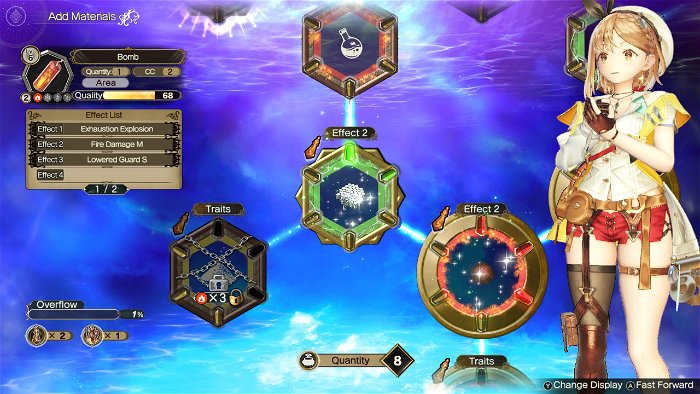
In terms of narrative, Atelier Ryza 2‘s light tone makes for a refreshing experience but a somewhat bland story. There are a lot of familiar tropes and the dialog often feels padded with pleasantries. It’s nice to have predominately lower stakes and a “everyday life” atmosphere for a change, compared to the genre’s typical “save the world from a would-be god” theatrics. But after a while cutscenes and conversations felt like a drag, especially if you enter an area and set off a couple different scenes at once. At its core, it’s a fairly typical narrative for an anime-styled JRPG, with the usual conventions like standard personality types, stock expressions, and an occasional objectifying camera angle.
